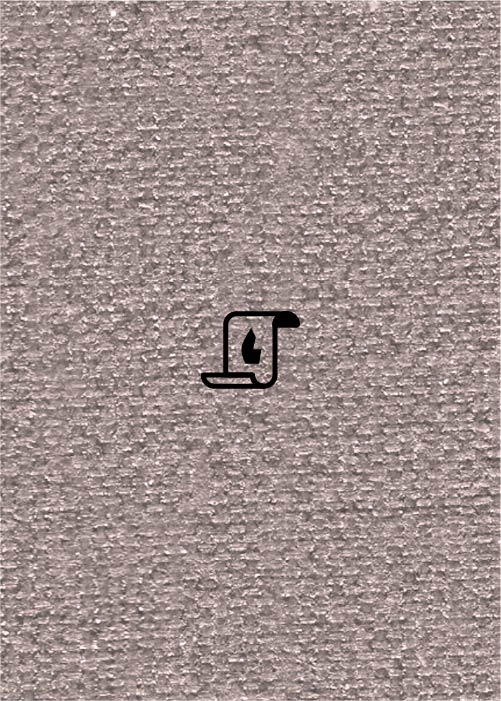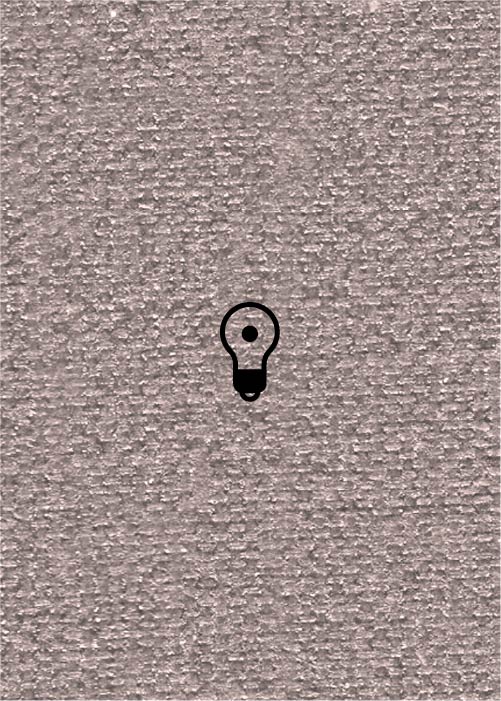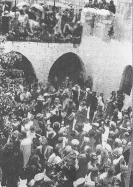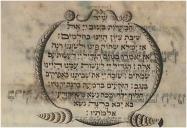(212 results found)

«A Special Kind of Antisemitism»: On Russian Nationalism and Jewish Music
… Ephraim Shkliar presented an arrangement of a Jewish folk melody to the class. He did not call it “Jewish,” only a … from the ornery antisemite had everything to do with his Hebrew first name. [28] Picture 6: Solomon Rosowsky (far … Zionist, and later the first professor of music at the Hebrew University. In 1907, the same year in which Shor …

Mitsve-tants (LKT)
… her partner each hold the end of a kerchief. No prearranged melody or practiced steps or forms are necessary for this … . Harkavi is the only one that in his Yiddish-English-Hebrew Dictionary made a distinction between kosher-tants -- … Rivkind 1962, pp. 45-46 . “ Mitsve-tants ... The first melody is one of the tunes sung by the badkhn as he invites …

Kosher-tants (LKT)
… “It can also happen that a dance has a Yiddish name and the melody for the dance is borrowed from another people. Thus, … . Harkavi is the only one that in his Yiddish-English-Hebrew Dictionary made a distinction between kosher-tants -- …

Badekns (LKT)
… Ben-Yisrael 1960, pp. 28-29 . “‘Veiling of the bride. This melody goes to the ‘kale badekns’ and also ‘kale bazetsn’ … this is called the badekns (veiling of the bride). [This melody was] once sung by Chabad Hasidim during the badekns … began to sing rhymed couplets in Yiddish, and sometimes in Hebrew as well, accompanied by the fiddlers...” [Wegrow, …

Dobridzien (LKT)
… cited Verterbukh , defines the dobridzien in English and Hebrew, that this was music that was played to honor the … entrance to the shtetl was a grand affair. The first melody ‘dobridz’in’ they played [as they walked] at the …

Dobranotsh (LKT)
… room and accompanied them with the good night – mazltov melody.” [Orgajev, Bessarabia, c. 1930s-1940s]. Bik 1964 . … ‘dobra notsh’ ( ‘a gute nakht’ ), from the beginning of the melody, the badkhn used to shout in a loud voice -- for the … humoristic, witty rhymes with the musicians in Yiddish and Hebrew. Sometimes he would also incorporate rhymes in …
Likhvod Hatanna Haelokai (In Honor of the Holy Tanna)
… Ha-Elokai.' The song is mostly constructed according to the Hebrew acrostics of “atbash” (alternating the Hebrew alphabet in direct and reverse orders; certain … Hassidim. Like many other songs in the Hillula genre, the melody, which is shared by the verses and the refrain, …
Chasidic in America
… consists of two distinctive sections. The first is a short melody in a style reminiscent of certain types of Hassidic niggunim . Both singers sing the same melody with Weiss harmonizing a third above Oysher. The … Lexicon of the Yiddish Theater , vol. 3. New York: The Hebrew Actors Union of America, 1959, pp. 2407-2415. 1 …
Shir hama’alot - The umbilical cord between liturgical and domestic soundspheres in Ashkenazi culture
… This melody was sung on the first two days of Pessa h for Birkat … preceding or during those same Holy Days. For example, the melody used for the shaking of the lulav during the Hallel … for Shir hama'alot among the Jews of Frankfurt am Main' [Hebrew] in Duchan 16 (2006): 293-307. … 10621 … Shir …
In Zaltsikn Yam - A Yiddish Workers' Song
… musical arrangements to the song. The first is a monophonic melody in a minor mode and in a triple meter, either in ¾ or … Idelsohn in 1932 in the ninth volume of his Thesaurus of Hebrew Oriental Melodies and was classified by him as a … and the old songs that they sing [See this interview in Hebrew ]. The version featured on this album has Kahn …






